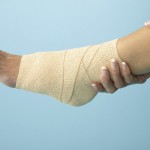 3 Red Flags That Indicate You Should Stop Exercising and See a Doctor
3 Red Flags That Indicate You Should Stop Exercising and See a Doctor
Exercise is a great way to keep your body feeling healthy and energetic. However there are signs to be aware of that indicate when exercise should be stopped and contacting a doctor is the best decision.
We have all heard the mantras. “No Pain No Gain”. “Push yourself through the PAIN”. “Pain is temporary but winning is forever”. When do we throw these old adages out the window and listen to our body? Our body will alert us when something is wrong. We receive this message of pain to tell us to stop an activity. Ignoring this signal of pain can lead to serious injury. Quite often exercise can cause some level of discomfort. How do we recognize the difference between normal exercise discomfort and pain that needs to be addressed by a physician?
There is a difference between pain and discomfort. It is normal to experience muscle discomfort and fatigue after a hard workout. Feeling the muscle burn during exercise is normal. Starting a new exercise or pushing yourself particularly hard during a workout can result in delayed onset muscle soreness (DOMS). This DOMS usually occurs in next 24-48 hours after a workout as muscles grow and repair. This type of discomfort is a normal part of the muscle rebuilding process. A simple day of rest or gentle stretching should alleviate this pain within a few days. It is very different from feeling sharp pain during or after exercise. This type of persistent, sharp pain should not be ignored. It is your body telling you something is wrong. Certain muscles, tendons and other tissues are signaling that they are being overloaded. Continuing with the activity while experiencing this type of pain can result in injury.
If you answer “YES” to following questions, STOP exercising and follow up with your physician:
Is the pain sharp in nature?
Does the ache or pain come on during or after a certain exercise?
Is there swelling, redness or warmth around the affected area or joint?
Did you feel a pop or snap during exercise in the painful joint?
Does the pain persist or worsen with warm up and gentle stretching?
Do you have pain at night that wakes you from a sound sleep? Is the pain not responding to over the counter pain medicine?
Another possible side effect from regular exercise is fatigue. Athletes require extra sleep and proper nutrition to allow there bodies to perform at high levels. This is the same reason when exercising on a regular basis you may experience fatigue. A good night sleep, proper hydration and proper nutrition are critical factors in reducing this fatigue. However, if you experience severe, unrelenting fatigue that lasts longer than a day or two after exercise, it is time to see your doctor.
Other symptoms to be aware of that can occur during exercise are dizziness, confusion, chest pain or lightheadedness. These symptoms demand immediate cessation of exercise and require medical attention. If you stop sweating and breathing becomes shallow, it is also necessary to seek medical attention. These can be signs of heat stroke or heat exhaustion, which can be a life threatening situation. Heat stroke can occur when exercising in a hot environment and the body cannot properly cool itself. The body temperature can rise to unsafe levels. Avoid exercise in hot temperatures and properly hydrate to reduce risk.
Our bodies are designed to be in motion. Regular exercise is one of the best things we can do to stay active and healthy throughout our lifetime. Listening to the signs of pain and getting proper medical attention when necessary can help prevent manageable situations from becoming chronic problems. Learn to listen to your body. Signs and symptoms are there for a reason. When you are alert and responsive to your body’s signals you can enjoy the incredible benefits of exercise and minimize risk of injury.
By Julie A Mulcahy, M.P.T.
Contact Julie via Twitter @ptrunningmomof4 or email jam82296@hotmail.com.
 Subscribe
Subscribe